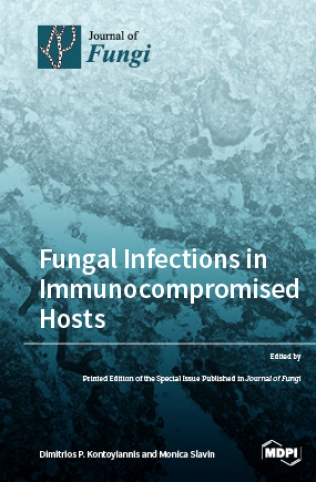Exploring the Biocontrol Potential of Phanerochaete chrysosporium against Wheat Crown Rot
IF 4.2
2区 生物学
Q2 MICROBIOLOGY
引用次数: 0
Abstract
The worldwide occurrence of wheat crown rot, predominantly caused by the pathogen Fusarium pseudograminearum, has a serious impact on wheat production. Numerous microorganisms have been employed as biocontrol agents, exhibiting effectiveness in addressing a wide array of plant pathogens through various pathways. The mycelium of the white-rot fungus Phanerochaete chrysosporium effectively inhibits the growth of F. pseudograminearum by tightly attaching to it and forming specialized penetrating structures. This process leads to the release of intracellular inclusions and the eventual disintegration of pathogen cells. Furthermore, volatile organic compounds and fermentation products produced by P. chrysosporium exhibit antifungal properties. A comprehensive understanding of the mechanisms and modalities of action will facilitate the advancement and implementation of this biocontrol fungus. In order to gain a deeper understanding of the mycoparasitic behavior of P. chrysosporium, transcriptome analyses were conducted to examine the interactions between P. chrysosporium and F. pseudograminearum at 36, 48, and 84 h. During mycoparasitism, the up-regulation of differentially expressed genes (DEGs) encoding fungal cell-wall-degrading enzymes (CWDEs), iron ion binding, and mycotoxins were mainly observed. Moreover, pot experiments revealed that P. chrysosporium not only promoted the growth and quality of wheat but also hindered the colonization of F. pseudograminearum in wheat seedlings. This led to a delay in the development of stem base rot, a reduction in disease severity and incidence, and the activation of the plant’s self-defense mechanisms. Our study provides important insights into the biocontrol mechanisms employed by P. chrysosporium against wheat crown rot caused by F. pseudograminearum.探索蛹虫草菌对小麦冠腐病的生物防治潜力
小麦冠腐病主要由病原菌镰刀菌(Fusarium pseudograminearum)引起,在全球范围内的发生对小麦生产造成了严重影响。许多微生物已被用作生物防治剂,通过各种途径有效地防治各种植物病原体。白腐真菌 Phanerochaete chrysosporium 的菌丝体通过紧紧附着在 F. pseudograminearum 上并形成专门的穿透结构,有效抑制了 F. pseudograminearum 的生长。这一过程会导致细胞内包涵物的释放,最终使病原体细胞解体。此外,蛹虫草产生的挥发性有机化合物和发酵产物具有抗真菌特性。对其作用机制和方式的全面了解将促进这种生物防治真菌的发展和应用。为了更深入地了解蛹虫草菌的寄生行为,研究人员进行了转录组分析,研究了蛹虫草菌与假单胞菌(F. pseudograminearum)在 36、48 和 84 小时内的相互作用。在寄生过程中,主要观察到编码真菌细胞壁降解酶(CWDEs)、铁离子结合和真菌毒素的差异表达基因(DEGs)的上调。此外,盆栽实验还发现,蛹虫草菌不仅能促进小麦的生长和品质,还能阻碍假丝酵母菌在小麦幼苗中的定殖。这导致了茎基腐病发展的延迟、病害严重程度和发病率的降低以及植物自我防御机制的启动。我们的研究为了解蛹虫草菌对由假根腐镰刀菌引起的小麦冠腐病的生物防治机制提供了重要的启示。
本文章由计算机程序翻译,如有差异,请以英文原文为准。
求助全文
约1分钟内获得全文
求助全文
来源期刊

Journal of Fungi
Medicine-Microbiology (medical)
CiteScore
6.70
自引率
14.90%
发文量
1151
审稿时长
11 weeks
期刊介绍:
Journal of Fungi (ISSN 2309-608X) is an international, peer-reviewed scientific open access journal that provides an advanced forum for studies related to pathogenic fungi, fungal biology, and all other aspects of fungal research. The journal publishes reviews, regular research papers, and communications in quarterly issues. Our aim is to encourage scientists to publish their experimental and theoretical results in as much detail as possible. Therefore, there is no restriction on paper length. Full experimental details must be provided so that the results can be reproduced.
 求助内容:
求助内容: 应助结果提醒方式:
应助结果提醒方式:


